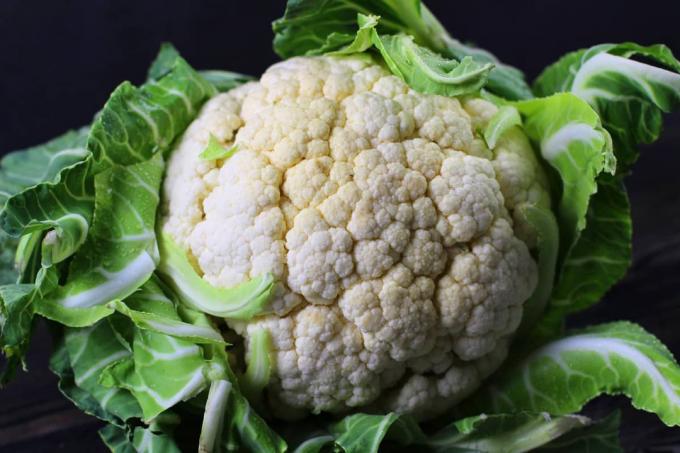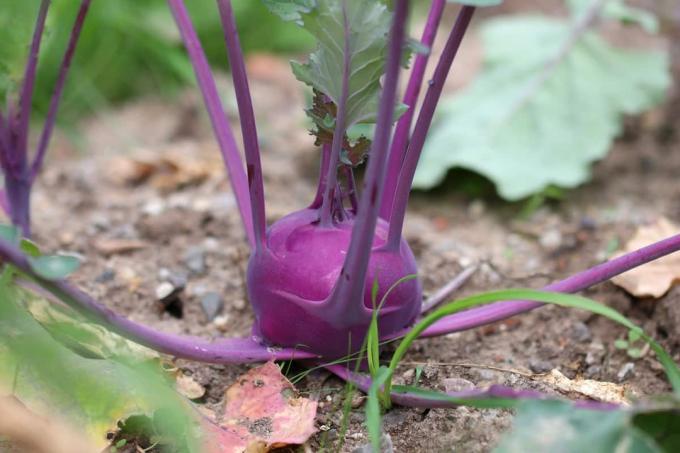

Table of contents
- Location
- substrate
- Prepare bed
- variety selection
- prebreeding
- cultivation
- Pour
- Fertilize
- crop protection
- harvest
- Conclusion
Brussels sprouts may not be the favorite food of many, but as a winter vegetable it is a healthy addition in the cold season. All the better if it can be harvested in your own garden as needed. For the cultivation of Brussels sprouts plants, however, some knowledge must be brought along, because the plants are heavy feeders with one or the other requirement for care and conditions. Interested hobby gardeners can find out what is required for a successful Brussels sprouts harvest in the following instructions.
Location
With regard to the location, the Brussels sprouts are quickly satisfied. For an optimal yield and strong plants, however, it should be in a sunny spot that is somewhat sheltered. Crop rotation should also be considered. Since Brussels sprouts are one of the heavy feeders themselves, the selected bed should not have been used as a cultivation area for other heavy feeders in the previous three years.
substrate
The substrate for growing Brussels sprouts must be rich in nutrients, humus and yet loose. Garden or vegetable soil enriched with compost and loosened up with sand is ideal.
Prepare bed
In order for Brussels sprouts to thrive right from the start, they need optimal conditions in the bed. For this purpose, it is best to spread plenty of well-rotted compost on the bed in the autumn before the planned cultivation of the Brussels sprouts. The natural fertilizer is then worked under by digging or simply raked in if the soil is already loose. Anyone who misses this date can catch up in the spring. Then at least two, preferably four weeks should pass before the Brussels sprouts are planted. During this waiting time, the nutrients are distributed more evenly in the soil and settle. In addition, important processes take place in the substrate with the help of various soil dwellers. This creates optimal conditions in the soil. If the soil tends to be compacted, it is advisable to add the sand already mentioned to loosen it. So much should be mixed in that a moist, crumbly structure is formed.
variety selection
Depending on when the Brussels sprouts are to be harvested, different varieties are possible. Basically, Brussels sprouts plants are divided into early and late varieties. For some, a harvest is therefore possible as early as September, for others only in December. Especially if the way to the garden involves a journey, it should be carefully considered whether winter varieties are the right choice - because the Brussels sprouts should be harvested as spread out as possible.
Early brussel sprouts varieties
- Early Tall Half
- Falstaff
- Nelson
- Predora
- Hossa
- Wilhelmsburg
With these, you have to pay close attention to whether they are frost-resistant varieties or not. This is not always the case with sprouts that ripen very early, which means that the harvest has to be completed early. However, no exposure to cold is necessary to achieve the sweet taste.
Late and recommended varieties
- boxer
- gronninger
- Hild's ideal
- Igor
- Harold
- fortress
prebreeding
Brussels sprouts can be sown directly into the bed, but better results can be achieved by growing them indoors earlier. This is done as follows:
- The potting soil is placed in small plant pots or - more practical - in pot trays.
- The Brussels sprouts seed is placed two or three at a time in each pot and lightly covered with soil.
- The substrate is well moistened but not washed out.
- Prepared in this way, the culture vessels are placed in a bright place. The ideal germination temperature depends on the respective variety.
- In the first three to four weeks the substrate should be kept slightly moist but never wet. A cover is not necessary.
The ideal time for germinating the seeds is in early spring or – again depending on the variety – in late winter. February or March is ideal for most sprouts.
cultivation

Outdoor cultivation can begin between April and May. The preferred plants are pricked out first. Only the strongest specimens should be planted. The procedure is then as follows:
- A distance of 50 centimeters is marked out in the row and between the rows.
- The Brussels sprouts are planted individually and watered well.
- To stabilize the plants and make harvesting easier, a simple wooden frame can be built. Two posts are inserted vertically at the beginning and end of each row. A connecting rod is placed and fastened on top of this.
- Another rod can be connected to the framework from each plant. This construction protects the Brussels sprouts from wind damage and also has another practical benefit in protecting the plants.
- Prepared in this way, the plants will be kept rather dry after the initial watering. The following waterings are carried out floating but at greater intervals. This stimulates deep root growth.
Pour
Are the Brussels sprouts plants well established after the first three to four weeks and have initially reserved pouring strong roots, the plants need a little more Humidity. Especially during summer growth, it is important to water frequently and, if possible, not to let the soil dry out.
Tip:
If you use pond water and plant manure in summer, you can combine watering with fertilizing. A layer of grass clippings mulch further reduces evaporation and maintenance.
Fertilize
The high nutrient requirements of Brussels sprouts and the long time until harvest can make it necessary to fertilize the bed again. As already mentioned, plant manure, for example from stinging nettles, and pond water without chemical additives can be used for this purpose. Compost, horse manure, grass clippings and horn meal can also be used. If the bed has been sufficiently prepared with nutrients, fertilization is sufficient, around August.
Tip:
Overwatering or prolonged rain can flush out nutrients and cause growth spurts that encourage deficiency. If the leaves become discolored, you should fertilize again - no matter when.
crop protection
Fleas, sawflies, cabbage flies and cabbage whites can bother Brussels sprouts. But before it even gets that far, the cultivation can be protected against the pests accordingly. Close-meshed protective nets that are stretched directly over the plants or the scaffolding described above are advisable. If it is lying on the wooden framework, checking underneath is much easier. As is the harvest. Consistently keeping the soil moist, as well as a layer of mulch and spreading plant manure help protect against flea beetles.
Tip:
The greater the distance between the individual Brussels sprouts plants, the lower the risk of pest infestation and diseases.
harvest
Depending on the variety, the Brussels sprouts harvest can begin as early as September or continue into March of the following year. Complete harvesting of the individual plants is neither necessary nor sensible. It is cheaper to pick as needed instead. The largest tubers are twisted off. These should each be two to four centimeters in diameter. Late varieties, which like Hilds Ideal are only harvested in winter, need a longer cold period for the pleasant and slightly sweet taste. Only the combination of sun and cold ensures increased storage of sugar, since this is no longer converted into starch or is converted very slowly. In order for the sugar to accumulate in the Brussels sprouts, the tubers must remain on the plant. So it's not enough to simply freeze them after harvesting. Different with Brussels sprouts plants, which are early ripe. The Nelson variety, for example, can be harvested as early as September. Not only do they not need frost, they hardly tolerate it or not at all. The reason for this is that more sugar is stored in the small tubers anyway. So the taste is sweet anyway. It should be noted with these, in turn, that the harvest must be weather-dependent. If there is persistent or severe frost, all Brussels sprouts must be harvested as quickly as possible before they die.
Conclusion
Growing Brussels sprouts in your own garden is no problem if a few points are observed during preparation and care. Anyone who has the necessary knowledge and chooses the right variety can also be a beginner in gardening and growing vegetables produce large yields quickly and fresh winter vegetables as needed for a long time during the cold season to harvest.
 garden editorial
garden editorial I write about everything that interests me in my garden.
Learn more about vegetables

Mixed culture: 9 good neighbors of Swiss chard
The cultivation of Swiss chard in the home garden is uncomplicated and the harvest rewards are considerable. Varieties with colorful stems are also real eye-catchers in the bed. Carefully selected neighboring plants contribute to healthy growth.

Mixed culture: 17 good neighbors of beetroot
Because of its uncomplicated nature, beetroot is often cultivated. To optimize the health and taste of root vegetables, it is advisable to plant good neighbors. These have a positive effect on growth and protect against pests and fungi.

12 good neighbors of cucumbers | mixed culture
Cucumbers are popular vegetables for mixed crops with other crops. Root vegetables are just as suitable as lettuce as plant neighbors. Plantings with kitchen herbs are attractive because they enrich the garden and kitchen. Flowering ornamental plants also improve growth.

10 good neighbors for onions | mixed culture
Good neighbors for onions or a beneficial mixed culture is not only natural, but It also reduces the maintenance effort, can keep pests away and the risk of disease to reduce. You can find out which plants are suitable here.

Mixed culture: 14 good neighbors of cauliflower
Cauliflower, also known as cheese or cauliflower, is a cultivated form of cabbage. It can be prepared in a variety of ways and can be eaten raw or cooked. Cultivation is not unproblematic, because cauliflower is very demanding.

Mixed culture: 11 good neighbors of kohlrabi
The kohlrabi likes to root next to many other plants, so a mixed culture with it is easy to implement. Not only does it grow splendidly and healthily. Even the scarce space in a house garden can be used optimally. Which are his favourites?



